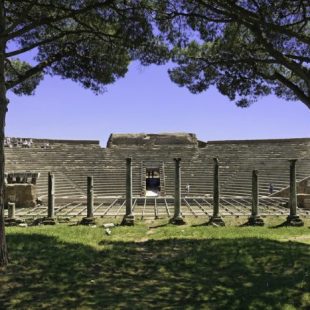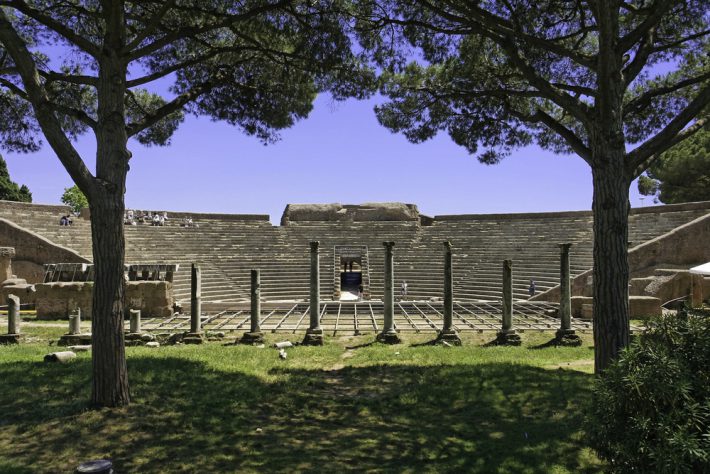
Visiting Lazio’s Ostia Antica
Approximately 20 miles from the city of Rome in the verdurous landscape between the Tyrrhenian Sea and the Tiber River, lie the fabulously-preserved ruins of Ostia Antica. It is believed that the Ostia ruins were founded in the 4th century BC as a military base to guard the mouth of the Tiber River against invasion.

Ostia developed quickly under Emperor Claudius and Emperor Trajan, becoming the major port of the city of Rome. After Rome’s demise in 476 AD, Ostia was deserted and the buildings deteriorated into ruins, sinking under the mud and sand of the River Tiber, which ultimately helped to preserve them.
It was during the late 1800s and early 1900s that excavations began on the site, uncovering most of the ancient town. The site is sprawled across 10,000 acres, with a main street that stretches for over a mile.
These ancient ruins have been described as being one of Italy’s “most under-appreciated archaeological sites.”
One of the key highlights of this ancient town, which demonstrates what life in Rome was like during the Empire, include Ostia’s amphitheatre, constructed in 12 BC. This incredibly well-preserved amphitheatre comprises of a series of steep stone bleachers in a semi-circular layout, which once held around 3,500 spectators.
Other fascinating highlights of the ancient Roman town of Ostia include well-preserved ancient apartment buildings, comprising of narrow stairways that lead to tiny rooms. These apartment buildings housed the poor dock workers that lived and worked in Ostia.
In contrast to the apartments that were home to Ostia’s poorest are the remains of the wealthy residences, with their elaborate marble décor.
The archaeological site is also home to a small museum, which displays many interesting remnants from the excavations.
If you want to get an understanding of how the people of Rome lived more than 2,000 years ago, then take the time to visit the ancient site of Ostia.


